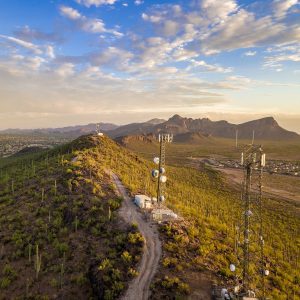This audio was created using Microsoft Azure Speech Services
Even though WiFi as an innovation in underground mining was first adopted way back in 2006 (see this article in MIT Technology Review), it still has not become completely ubiquitous even now, 11 years later. And that is true despite the fact that its benefits have been clearly demonstrated for years, including higher levels of safety, improved productivity and lower costs.
Case in point. Recently at a meeting of the Global Mining Standards and Guidelines Group which I attended, one mining operations manager related how turning on WiFi-enabled equipment-tracking revealed major deviations between what they always thought was happening and what was actually happening. The key thing being that the equipment was already WiFi-enabled, it just wasn’t being used.
Clearly there are still technical challenges to overcome, as well as issues around change management and corporate cultural. This article gives a nice summary of the technical challenges of installing WiFi in a subway, which presents many of the same challenges as in an underground mine:
- “Each station needs antennas, access points, backup power, and a remote unit that distributes cellular service throughout the platforms.”
- “The hardest part of that installation? Finding a good time to do it…”We have guys working down there while there are live trains going through the system and people on the platform.”
- “The other problem is water. And not just puddles or errant drips from street-level.”
However, WiFi’s time arrived years ago but only now seems to be considered more standard infrastructure than new innovation. In fact, I recently heard a mining CEO and prior mining engineer say that he considered WiFi as a necessary piece of infrastructure in his operations today and that in his opinion, the benefits don’t have to be justified and explained again and again. The growing number of vendors offering a WiFi-enabled solution and the increasing number of mines using it also prove the journey from innovation to infrastructure is almost complete.
What about Augmented Reality?
If you don’t know exactly what Augmented Reality is and how it can be utilized in the industrial environment (or even if you do), here’s a short video you can watch on Schneider’s Augmented Operator Advisor to see it in action.
I believe that we will see a journey from innovation to infrastructure for Augmented Reality (AR) similar to what we have seen for WiFi. CIM Magazine highlights several use cases that are today in the innovation or early adoption phase. I presented on this topic at the CIM MEMO Conference in Saskatoon and it struck me as I listened to various other presentations how Augmented Reality could have solved many of the problems they were discussing.
A simple example involved the automation of a conveyor at a mine site. The mine engineer didn’t believe that the automation system for the conveyor was working correctly. The automation engineer did not agree with him and believed it had to be something else, and it took days to convince him to even look at the issue. When they did, they not only found a problem on the automation program running the conveyor, but on every other conveyor at the site due to the cut-and-paste application of the configuration code.
What if they could have looked at the conveyor through their mobile devices using an Augmented Reality app and pulled up the conveyor’s configuration parameters right on the screen? Or run a simulation when the problem was first brought up? They would have recognized the issue much more quickly and avoided the disagreement and wasted time altogether.
Augmented Reality is not just for conveyors obviously. It can enable all kinds of improvements, especially related to maintenance and troubleshooting, by providing effective decision-support systems and easy-to-use tools in a format that is actionable and simple to understand.
Thanks to Augmented Reality, the next generation workforce will clearly be more empowered to make better decisions, and in real-time, but how quickly will it be embraced and adopted on an industry-wide scale? There will likely be some “killer apps” for it that will motivate early adopters, and its sheer usefulness should move it from innovation to standard infrastructure fairly quickly. But like WiFi, even with its clear benefits and advantages, sometimes all the good reasons in the world might not be enough to enable a speedy transition from innovation to infrastructure.




Conversation
Yong The
7 years ago
This is another brilliant essay, Greg. Very topical in virtually every conversation with mining companies today
Greg Johnson
7 years ago
Thank you Yong for your nice comment and glad you enjoyed the blog.